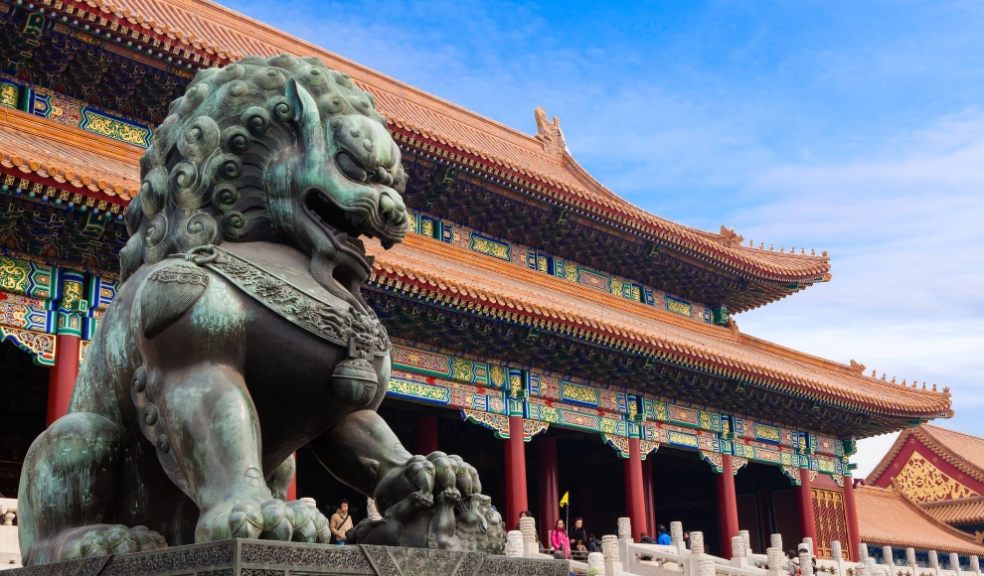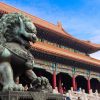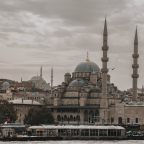
Forbidden and forgotten spots around Beijing
Beijing, a city that has been the heart of Chinese history for centuries, is a place of change that is rapidly transforming itself into the 21st century. There is so much to see and do in the city that it is hard to decide where to start.
Here is a list of some of the most popular tourist attractions in Beijing, China that has fascinated tourists from all over the world.
The Great Wall of China
It is very rare that you will see one of the most popular wonders in the world during your trip. Originally built to keep invading Mongolian forces at bay, the Great Wall represented China itself. It is one of the world's greatest tourist attractions and can be reached on a day trip from Beijing. If you take a tour organized by professional tour operators or hotels, you will learn a lot about this vast beauty.
The Forbidden City
Whether you are a history buff, find amazing architecture, or just enjoy the beauty of China, a visit to the Forbidden City is a must! This place was the palace of the Ming Dynasty emperors for over 500 years and now houses the Imperial Museum. The museum houses some extremely attractive antiques that are really worth seeing. The city is right in the center of Beijing. However, there are other forbidden and forgotten spots around Beijing that you also need to understand, and these includes
Longtan Amusement Park Ferris wheel
This Ferris wheel is located at Tiantandongmen in Beijing. Longtan Amusement Park Ferris wheel was established in 1987 and was closed in 2010 .longtan Amusement Park the most popular family attraction. Still, today, locals recall the memories of exploring the place in the old days. As we speak today, the place has become an aquarium, food huts, and haunted house.
Shougang Capital steel plant
Located in Shijingshan lu was the largest steel company that sits on 70 hectares of land. It is located on one of the largest industrial brownfields in Beijing, "Metallic Park". The capital steel plant was closed in 2010, and the remains provides memories of what happebned here. The place has many highlights which visitors and locals could explore. These include; abandoned laboratories, an antique graveyard, and a hollow blast furnace. Unfortunately, the place has been forgotten, and noboy visits to this area now. The plant was moved to Hebei province to reduce pollution in the city of Beijing.
Wonderland amusement park
Located 20km from the Beijing center, Wonderland was ranked as the largest amusement park in Asia. It boasted majestic castles, radical roller coasters, and roaring rides. Wonderland was a great family attraction, but unfortunately, the place was banned and shut down in 1998 due to financial constraints for proper park management. The remnants of wonderland park still exist, but the place is forbidden. Tourists are not allowed to visit this place because its reputation has fallen. Rumors from the locals say that the park construction was stopped because the area was haunted, while some say that there are massive graves. But in reality, the shutdown of the park was due to a lack of enough money.
Catholic school
The catholic school was built in 1919 and is situated adjacent to PLA hospital; although protected as a church, it no longer functions. Instead, it becomes a store for PLA hospital materials, making it abandoned and gruesome for entry.No visitors are allowed to enter here, becoming an understated tourist attraction. There is a hole that leads to the tunnel underneath the building, and the rooms inside are filled with jars and specimens of human remains such as the heart, brain, and intestines. The place is no longer for tourists instead of adopting the PLA hospital's management for storing laboratory materials.
Imperial Palace
The Imperial Palace belongs to the Minh and Qing Dynasty in Shenyang and is over 600 years old. During the execution for betrayal, anyone against State power was killed by the envious guard. During this period many people lost their lives and hence resulted the bloody walls. In 1911 the palace served as the secondary capital and temporary residence. Later on, the palace was transformed into a tourist site under protection by the security guards. The palace has been haunted by the strange sounds that occur during the day and at night. This remarkable architectural building offers the testimonial history of the Qing Dynasty; its construction reveals the customs and traditions of Manchu people and other tribes of north china. The palace is scary, and only brave people can head to this palace.
Guijie Guijie
Located in Dongzhimen, Guijie is Renowned as the unique food street in Beijing. The street boasts many shops, more than 100 restaurants and hence the reason for its uniqueness. This gourmet street has colorful and peaceful structures but is also gloomy and scary. There are many ghost stories believed to haunt the place, especially at night. According to locals, the word Guijie means GU meaning haunted by ghosts. In the past, there were many shops selling coffins, but people were scared of coming to this place and as a result the coffin business diminished in 1987, and the catering business thrived.
Tomb of Qin Shi Huang, China
The tomb of Qin Shi Huang is one of the Chinese archeological sites located in Chang'an, Shaanxi sheng. It was an important discovery of ancient times. Recently the tomb is situated near the modern city of Xi'an. The tomb has many unique statues depicting the ancient Chinese warriors. Inside the tomb is an underground cavern surrounding the first emperor's burial complex in China, known as Qin Shi Huang. Until today this tourist attraction is under the protection of mestry.No one is allowed to enter the tomb. The tomb is believed to have booby traps to protect it from intruders. It has a high mercury concentration that is dangerous to a human being
Conclusion
Beijing Forbidden City: This is the first place to start when you go to Beijing. The Forbidden City is the largest palace in the world with an area of approximately 720,000 square meters, consisting of 800 buildings and 9,000 rooms. It was once a palace for 24 emperors who ruled China during the Ming and Qing dynasties. It is the fifth most beautiful castle in the world and has been declared a World Heritage Site by UNESCO.



















